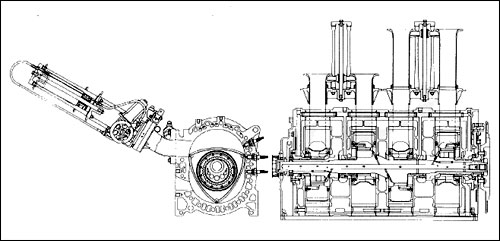
I pine for this car. Yes, I do.
This is the car on which I cut my teeth mechanically. Before the red RX-7 came along I congratulated myself on being able to change a starter unassisted; afterward I would tackle almost anything with little hesitation (and in many cases, preparation).
It was another eBay purchase, February 2000. This was still before eBay Motors came along and the listing for this car was beyond terrible. Two lines of text and no picture, but the kicker was that it was located just down the road in Greensboro. Having a little extra saved up, Aaron and I made the two-hour round trip to check it out.

When we arrived we couldn’t believe our eyes. Except for a blown engine, the car was pristine, perfect, cherry—literally. The seller worked in an automotive paint shop and had painted the car himself with loving attention to detail. However, aside from his artistic talents with a paint gun, he was a stereotypical American auto enthusiast who, “didn’t know nothing ’bout no rotary engine.” Thus, when the engine blew, he was baffled. Aaron and I, being rotorheads, saw opportunity. We thanked him for his time and returned to Raleigh, intent on scooping it up.
And I did. No one else must have driven out to see the car since my bid was less than $300. The owner delivered the car the following week on a flatbed trailer, visibly bothered that his eBay sale hadn’t gone as well as he had hoped, but a man of his word.

So the plan was hatched. Between the black RX-7 with its strong engine but rusted-out northern chassis and the red RX-7 with its blown engine but sound body, I would make one complete and perfect little sports car. My dad was less than optimistic about my chances of success, having never attempted something as involved as an engine swap, but his skepticism just spurred me on. To shorten the story, I learned a lot, made a couple of time-consuming but non-terminal blunders along the way (keep grease away from the clutch disc!), and by early August, after about a month and a half of work, I fired up the good engine in the red car for the first time. That was an experience unto itself since the car had no exhaust but the manifold at the time and rotary engines create noise all out of proportion to their small displacement. Not only that, but I had squirted some automatic transmission fluid into the combustion chambers to lube the seals pre-startup, and the ensuing cloud from the burning ATF completely blanketed the cul-de-sac. But it ran, and ran well. I was ecstatic.
So where is it now? Why didn’t I keep it? The reasons sounded much more plausible at the time, but today I wish, oh how I wish I had reconsidered. After having the car for a few months and enjoying it thoroughly, for easily-preventable reasons the good engine ate an apex seal. Being in college at the time and in a bit of a temporary financial pinch, I somehow decided the car had to go. So in a fit of misdirection I put it up on eBay and sold it, with a blown engine, for $1500. I probably made money on the whole ordeal, but I still regret it.
The buyer arrived to haul it away the same way it had arrived in my parents’ driveway: On a flatbed trailer. From what I gathered, he was a Wankel enthusiast from somewhere around Goldsboro and planned to do a blow-through Weber turbo install. I never heard from him again after the car disappeared around the corner. Funny thing that’s never happened before or since: My mom witnessed the transaction and actually teared up as the red RX-7 was being trailered away. I didn’t quite know what to make of it then, and still don’t, really. I never knew she’d been so attached to it. If I had only known then how much I would long for it now, perhaps I would have been more sympathetic.
Editor’s note: This post is adapted from a “car history” post I wrote on an older blog of mine some years ago. Read the first installment of the two-part series here.





















